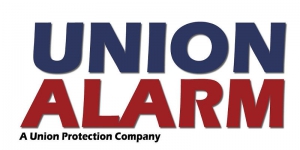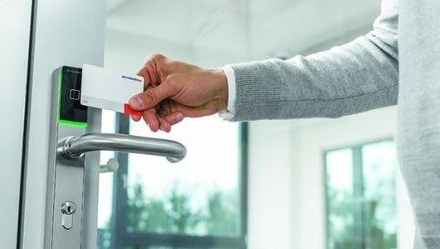Managing Employee Access To Your Building
You wouldn’t put sensitive information on a computer without password protection.
So why would you protect your business with an outdated security system?
To keep up with today’s commercial security standards, it’s time to implement card access control in your building. With an access control system, users must present authorized credentials before they can enter your building.
As your Calgary commercial security experts, we know a thing or two about managing access control. We’ve set out to help business owners like you protect their buildings from security breaches.
Here’s how to do it:
Why You Need Access Control
You trust your employees; otherwise, you wouldn’t have hired them. But trust isn’t necessarily the issue here. Security risks can arise in the following scenarios:
A terminated employee has access to your building
In business, you can’t always part ways with employees on the best terms. If tensions are high, a recently terminated employee may seek access to your building.
With an access control system, you can immediately deactivate an employee’s key card or fob to revoke access to your building. And you can do this without having to call a locksmith to rekey the locks!
Tailgating
As Canadians, it’s part of our culture to be polite. When we enter a building, our instinct is to hold the door open for the next person.
But at a commercial facility, this practice poses a security risk. It’s called tailgating. You can’t verify that the person behind you is authorized to enter your building. It’s best to close the door behind you as quickly as possible—even if that means closing it before someone else can enter. This ensures each individual has the proper credentials to access the building, or forces them to announce their arrival via telephone or intercom.
Outdated visitor management system
How do you keep track of who enters your building? Too many businesses still use a paper visitor log to track guests or employees. This makes it easy to lose track of who has been on the premises.
Your front desk staff won’t need to track who enters your building—the access control software will do that for you.
The dangers of these security hazards cannot be understated. They may lead to data breaches, stolen assets, property damage, or even physical harm.
So, what can you do to prevent these issues? We’re getting into that in the next section:
How Access Control Systems Can Help
It’s clear that you need a way to manage employee access; otherwise, your business is at risk. With a visitor management system, you can:
Easily manage employee access
When a new employee joins your business, you can give them access on day one. And if someone decides to leave, you can revoke their access just as fast. Access control allows you to manage who can gain entry to sensitive areas of your building.
With role-based access control, you can set up permissions and restrictions for employees and guests. Manage who can gain access (and during which times).
Track user activity
If something goes missing in a restricted area, you need to know who was last in there. Your access control software will keep a log of the people who entered, including the date and time.
Temporary users
Remember that plumber you granted access to a month back? By granting them a temporary card or access code, there’s no need to remove them from your access control software. The system automatically removed their access privileges on the date the credential was set to expire.
Educate Employees
An access control system won’t do much good if your team doesn’t know how to use it. Keep your team in the loop to make the most of your security system. The following measures can help keep your building safe:
Safety meeting
You’ve just set up a brand-new access control system. Great!
The next step is teaching your team how to use it.
During the meeting, you can explain how the access control system works and distribute swipe cards or key fobs. You can also outline new security protocols, such as:
- Don’t share your credentials with other people.
- If you need to bring a guest into the building, notify management in advance.
- Don’t let other people follow you inside the building without using their security credentials.
- If you need access to restricted areas, contact management.
Set up a security reporting system
Given that your employees spend hours at your commercial facility, they see security risks firsthand. Make sure they have a way of reporting this information to you. That way, you’ll be alerted as soon as a security risk arises. In some cases, employees may want to pass on this information anonymously.
Signage
In our busy lives, it’s almost too easy to forget things. At work, your employees are buzzing with all the tasks they need to do; post signage to help them keep security in mind. These can be friendly reminders about not sharing your credentials and ensuring the door closes behind you.
Choosing an Access Control System
You’ve probably used an access control system before at other buildings. If you live in a condo, you might use a key fob to enter. And on your phone, you might have set up facial recognition.
Not sure which credential type is right for your building? The most common credential types for access control systems include:
- Biometrics. This includes fingerprints, eye scans, and facial recognition technology.
- Mobile credentials. What’s something you never leave home without? Your phone. Linking physical access control to your phone is a convenient and effective method to accessing your place of business.
- Swipe cards and key fobs. A swipe card can also be used as an ID badge; when other employees see you wearing one, they’ll know you’re authorized to access the building. You can create visitor badges for guests and trade technicians who need to access your building.
Assess your risk level
Consider factors like:
- Is your building open to the public?
- Do you have staff members that come in after-hours?
- Is the building located in an area with a high crime rate?
- How many entrance points does the building have?
- Do you get mail or packages delivered to the building?
Based on these factors, you can determine what kind of physical security system your building needs.
Design an Integrated Security System With Union Alarm Today
The right access control system for your business will depend on many factors. Given the importance of this decision, it’s best to have a security expert weigh in on the matter.
Searching for an access control solution? At Union Alarm, we offer security cameras, monitored alarms, and access cards in Calgary. Invest in the protection of your business with an integrated security system. To speak with one of our security system installers, contact us today.

